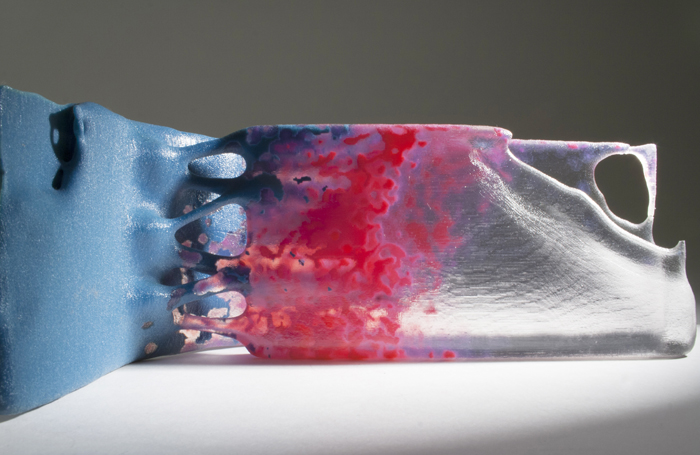Computational Blends: The Epistemology of Designing with Functionally Graded Materials
Dr Kostas Grigoriadis, Architectural Association School of Architecture, London
Awards RIBA President's Awards for Research 2018
Category Design & Technical

Considering recent advances in material science, the research proposes a novel method of designing with a type of material that is known as multi-, or functionally-graded (FGM). FGM consist of sub-materials continuously fused together in a gradient manner in one volume, without the use of mechanical connections.
A criticism posed of the scant methods for designing with FGM in the computer is that they do not consider material behaviour when attributing sub-materiality. What is effectively proposed as a counter technique is to use computational fluid dynamics (CFD) simulations to emulate the fusion of materials based on their physical properties. The main objective in effect, is to formulate an epistemological framework corresponding to the use of CFD in multi-material design.
This method is targeted to the area where glass and aluminium frame connect in a unitised curtain wall panel. The component-based make-up of this facade system is associated with problems such as environmentally hazardous production processes, and post-installation failures. A component-less, continuous FGM connection would eliminate these issues.
The research identifies appropriate materials that can be mixed to generate the part, describes the form of the digital container that sub-material blending can take place within, analyses existing FGM manufacturing techniques and structural loading on the panel to assign the affecting forces in the simulation environment, and sets out criteria for terminating the simulation. This is followed by bespoke computational workflows to visualise the resulting FGM connection, as well as to 3D-print it in a multi-material.
The findings identify the shortfalls of material simulation use in design, the limitations of visualising a partially transparent multi-material, and the problems with its direct fabrication.
The resulting original contribution of the research is a mutable process model created in commercial 3D software that can be used in a standard laptop computer to design with FGM.






